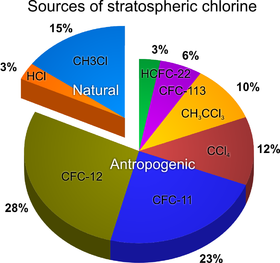Pick ONE resource that may be renewable AND nonrenewable depending on its rate of use. Describe 3 ways in which your resource can be managed better to ensure their renewability. Give one example of a situation when this resource has been overused. Your essay should be at least 2 paragraphs long. Remember to write in complete sentences, using appropriate grammar, punctuation, and spelling. Be sure to cite any sources that you use.
here is the material.
|
Humans have had a huge environmental impact, from accidents and spills to just the way we live our lives. We are constantly changing the planet and its ability to sustain life. Many people believe that unless we make changes, Earth is heading towards a future where it is unable to sustain life.
Accidents
Waste and oil spills can impact the environment long past the time the event has moved out of the news. It is impossible to get all of the spilled material up and some soaks into the ground and water. Plants can take toxins into themselves that then get passed to animals that eat the plants.
Click HERE to watch a video on the effects of the 2010 BP oil spill in the Gulf of Mexico.
|
Click HERE for an interactive about the 1989 Exxon Valdez oil spill in Alaska, the clean up, and the preventative measures now in place.
|
|
Impact of the Human Lifestyle
As technology advances, the impact human lifestyles have on the environment grows greater and greater. For example, as the technology for cars improved they became more available and more people began driving them. This increased the impact on the environment due to air pollution and move paved roads and parking spots.
Urban sprawl has had an increasing impact on the environment as more and more of the world becomes developed. This leaves less land to absorb precipitation. Water that lands on paved or otherwise impermeable surfaces becomes runoff, making rivers and streams more full and carrying more sediments and pollutants picked up along the way.
Greenhouse gases are gases that trap heat inside of our atmosphere, causing the global temperature to rise. The primary greenhouse gases that humans are responsible for adding to our atmosphere are:
- carbon dioxide, CO2 – produced by the burning of fossil fuels like coal, oil, and natural gas
- methane, CH4 – emitted during the transport and production of coal, oil, and natural gas. Also produced by livestock and the decay of organic waste in landfills.
- nitrous oxide, N2O – produced by various activities, including the combustion of fossil fuels
- fluorinated gases – emitted during various industrial activities, these gases are frequently used in place of ozone depleting CFCs
Click HERE to watch a video about amounts of carbon emitted into the atmosphere in the US.
|
The ozone layer protects us from ultraviolet B (UVB) radiation responsible for skin cancers and cataracts. An increase in halogens, particularly chlorine, in the stratosphere has caused the ozone layer to thin over time. The main source of these chemicals in the atmosphere is due to their use as refrigerants. In 1989 the use of CFCs and other ozone depleting chemicals was banned, which seems to have slowed down the depletion of the ozone layer.
This pie chart shows that more than 80% of the chlorine in the stratosphere is antropogenic, produced by humans.
Even beyond large scale problems like waste and oil spills, water pollution is a big problem. The EPA (Environmental Protection Agency) estimates that 40% of the rivers and lakes in the country are too polluted for swimming or fishing. Industries dumping waste in the water has been virtually stopped, and the main cause for the continuing pollution of our waters is because of pollutants picked up as precipitation runs over land on its way to rivers and streams. Pesticides and and urban runoff are the main contributors to this issue. These pollutants can run into our rivers, lakes, and streams or can be absorbed into our groundwater.
| |
Click here to join Tim & Moby at BrainPop© as they explore humans and the environment.
BRAINPOP© DIRECTIONS:
1) Click “Play Movie” to begin the movie. You can click “full screen movie”to watch the movie in a larger screen.
2) Check out the “Q&A” to review important ideas about humans and the environment.
3) Want to learn some more? Go to “FYI” to learn cool facts about humans and the environment.
4) How well do you understand humans and the environment? Take the “Review Quiz” to find out. This is not an assessment – just practice! Your score is not recorded.
5) Close the window and return here to learn more!
|
Renewable Resources
Renewable resources are those that are replaced at around the same rate that they are used, providing a constant supply.
Wildlife and forests are renewable resources as long as they are used wisely and responsibly. If we just cut down trees without ever planting new ones, we will eventually run out of trees. Overfishing in the ocean has similarly cut down the population of some fish to dangerous levels.
Water, wind, and sun are good renewable energy sources. Unfortunately they do not provide enough energy to meet the current energy demands. Much research is being done to develop a new, renewable energy source, like fuel cells.
Click HERE to learn more about fuel cells.
|
Nonrenewable Resources
Nonrenewable resources are those which are not replaceable fast enough to match their usage rate. Fossil fuels are the primary example of nonrenewable resources. Fossil fuels are created by the breakdown of organic matter over millions of years deep within the Earth. Coal, natural gas, and oil are all examples of fossil fuels. At the rate at which we consume fossil fuels, they will eventually run out, possibly in the next few centuries.
|
|



